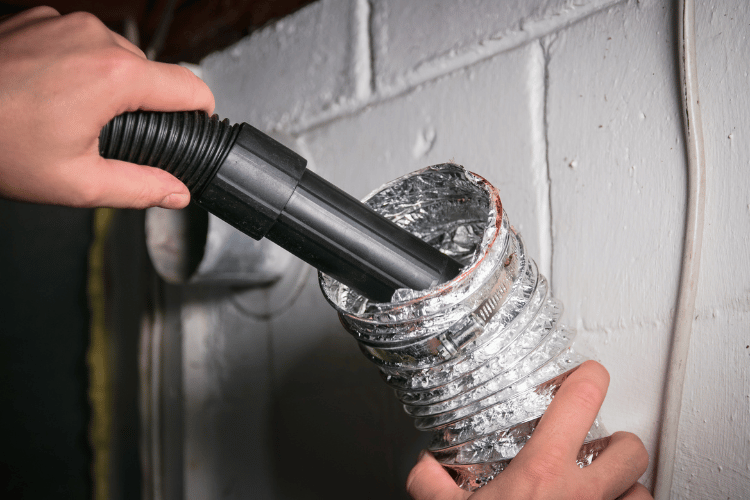What is a Finished Basement: A Successful Homeowners Guide
Are you wondering what is a finished basement? Here is a successful homeowners guide to help you get started finishing yours.
This post may contain affiliate links, I earn from qualifying purchases at no extra cost to you. Click here for my disclosure policy
Not all places where homes are built can have a basement underneath them, and this can be because of the ground material. Some states have granite rock, sand, or soil that doesn’t work well with building a basement. Those that do have a basement underneath them, are often unfinished unless you contract a finished basement while you’re building a home
You might be interested in my post: Basement Sealing: All You Need To Know. An unfinished basement has a concrete floor and walls or sometimes cinderblock depending on the builder and location. This unfinished basement is great for storage, and we used our unfinished basement for playtime when my kids were young. You can see our basement makeover here at 3 Tips For Creating The Best Possible Basement Makeover
What is a finished basement? It’s a space that you make like the rest of your home, to create more living space like a family room, bedrooms, an office, a bathroom, etc.

What is a Finished Basement
A basement renovation can be a great way to add space and value to your home. In the US, a basement renovation is one of the most popular ways to add space to your home and can cost upwards of $20,000, depending on the size and amenities required. Whether you’re looking to add an extra bedroom, a home office, or a recreational space, a successful basement renovation requires careful planning and consideration.
If you are considering a basement renovation, the following tips can come in handy.
Check your local state’s building regulations.
Each state has its own building code and regulations in the United States. This is because every state has different climatic conditions, so the building must be able to withstand these. It is important to ensure that your basement renovation complies with your state’s building regulations. You can find your state’s building code and an example of a permit online. You may also want to contact your city’s building department to see if they have any building regulations specific to your area. If you are unsure how to check the building regulations for your state and local area, consider hiring a contractor or architect to help you.
Waterproofing
Before you start any renovation on your basement, you will need to waterproof the walls. Waterproofing is a significant factor in any basement renovation. The walls and foundation of your house are built to withstand rain and snow but not water pressure. When water is present, it can cause major damage, such as mold and structural damage. Waterproofing is critical in a basement because there are many ways that water can get in. The ground outside your house can be waterlogged after heavy rains, and a crack in the soil can allow water to seep into your basement. You can also have water issues if your neighbors have drainage problems. You can avoid wet basement issues by putting proper waterproofing measures in place and working with professionals to ensure this is done correctly.
Fireproofing
Although it is not as important as waterproofing, fireproofing your basement is vital. You can do this by installing fire-resistant drywall, fire-retardant materials around gas appliances, and a fire door between your basement and the rest of the house. A fire separation wall is made of non-combustible material and can be made of metal, masonry, or concrete. In addition, it is a good idea to install smoke detectors in your basement and add sprinklers if it is large enough is a good idea. If you plan on using an unfinished basement as a living space, it is also a good idea to put a fire-resistant barrier between the living space and the rest of the basement in case of a fire in the living space.
Don’t forget to make areas of egress.
While you may be excited about the new space you are adding to your basement; it is essential to remember to ensure there are areas of egress for your basement. Areas of egress refer to the path you should follow in an emergency to exit the space safely. In most cases, this means having two exit staircases, wide enough to fit a standard-sized person, in the basement of your home.
Other things to consider for your basement remodel
- Is moisture getting in your foundation walls, you’ll want to take care of that first before finishing your basement walls
- What kind of ceiling do you want, in some places if you leave your basement ceiling open it doesn’t count as a completed home’s square feet and you have access to your HVAC system and plumbing.
- What kind of flooring – carpet, tile, wood floor, etc
- Do you want access to your pipes
- Will this add home value
- What do you want in this living area
- Do you want a storage closet
- Fix any leaks ahead of time
- Do you want a laundry room for your washer, dryer, freezer, etc
- What is the humidity level, do you need a dehumidifier or a humidifier
- Will you want a kitchenette or bar area
- Do you want a home gym or playroom
- Make sure to take care of your sump pump
- Follow your local building codes
- Will you DIY it or hire someone?
- Do you have the ability to make your basement a walkout
What is a Finished Basement Conclusion
A basement renovation can be an excellent way to increase the living space in your home, and homeowners can expect to recoup up to 70% of the cost in resale value down the line. However, it pays to pay attention to all the small details to ensure your basement renovation is safe and secure and doesn’t cause any issues down the line.
Shop any of these stores and I receive a small commission at no cost to you.
 Echo Dot (4th Gen, 2020 rel...Shop on Amazon
Echo Dot (4th Gen, 2020 rel...Shop on Amazon Apple AirTagShop on Amazon
Apple AirTagShop on Amazon Amazon Fire TV Stick, sharp...Shop on Amazon
Amazon Fire TV Stick, sharp...Shop on Amazon

Check out some of my related posts!








